No products in the cart.
NEWS
Unlocking Abundant Harvests: Expert Strategies to Significantly Increase Tomato Yields
Tomatoes are a beloved cornerstone of the home garden, celebrated for their incredible versatility and delicious flavor. However, encouraging these plants to deliver a truly bountiful yield can often feel like a challenge, even for those with green thumbs. Basic practices like maintaining healthy soil, implementing effective pest management, and ensuring consistent watering are undeniably crucial foundations for successful tomato growing – indeed, they are fundamental elements when establishing any vegetable garden. But if your goal is to elevate your harvest from good to exceptional, applying proven techniques can make all the difference. Beyond simply increasing the quantity of fruit, many of these methods also contribute to fostering faster, more vigorous plant growth. Whether you are just starting your gardening journey or are a seasoned expert, incorporating these strategies will empower you to maximize the potential of your tomato plants, promising a summer generously filled with the taste of your own sun-ripened tomatoes.
Choosing the Right Tomato Varieties for Peak Performance
The journey to a higher tomato yield begins with selecting varieties known for their inherent productivity. High-yielding tomato types have been specifically developed to produce fruit in abundance, making them an excellent choice for maximizing your home garden output. However, simply focusing on yield isn’t enough. Combining high production with strong disease resistance is key to minimizing the risk of losing your precious crop to common tomato ailments. Choosing varieties resilient to prevalent diseases ensures that your plants remain healthy and productive throughout the growing season. By prioritizing both yield potential and disease resistance, you set the stage for a truly bountiful and healthy harvest. Many of these top performers are also surprisingly straightforward to cultivate, making success achievable for gardeners of all levels.
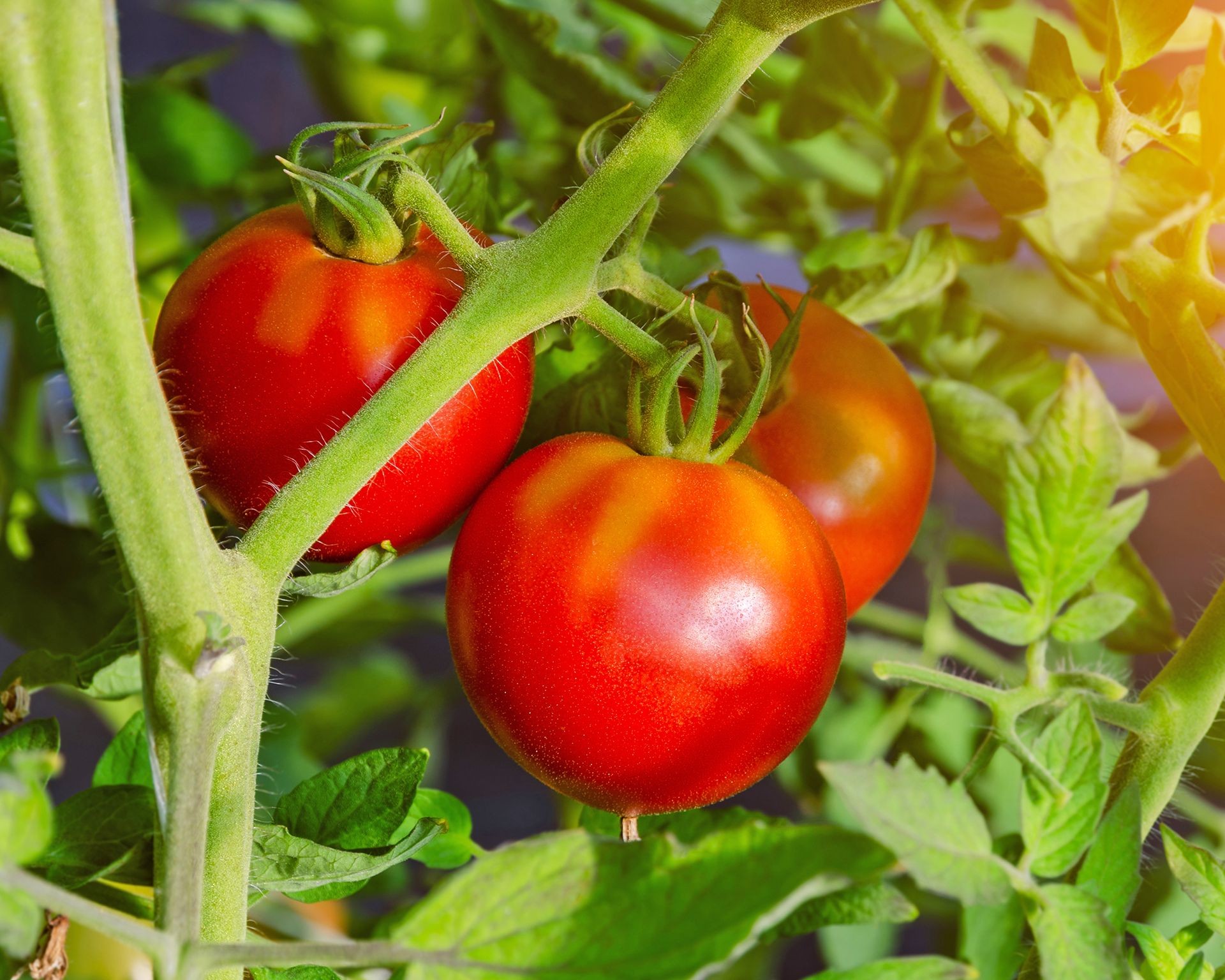 Ripe Celebrity tomatoes growing on the vine, demonstrating high yield potential
Ripe Celebrity tomatoes growing on the vine, demonstrating high yield potential
Consider exploring hybrid varieties engineered for both vigor and output. Indeterminate types, which continue to grow and produce fruit until frost, offer extended harvest periods when managed correctly. Determinate varieties, often bushier, produce the majority of their fruit within a concentrated period, making them ideal for canning or processing. Researching the characteristics of different types will help you align your selection with your gardening goals and available space.
Implementing Effective Support Systems
Providing adequate support for your tomato plants through staking or trellising is a fundamental technique that significantly contributes to improving yields and making the most efficient use of your garden space. Keeping plants upright and off the ground is essential for several reasons. It ensures that light is distributed more evenly throughout the plant canopy, powering photosynthesis which is vital for growth and fruit development. Improved air circulation around the plant foliage helps to reduce humidity, drastically lowering the risk of fungal diseases that can devastate crops. Support also simplifies the process of training the plant’s growth and removing any excessive, unproductive foliage.
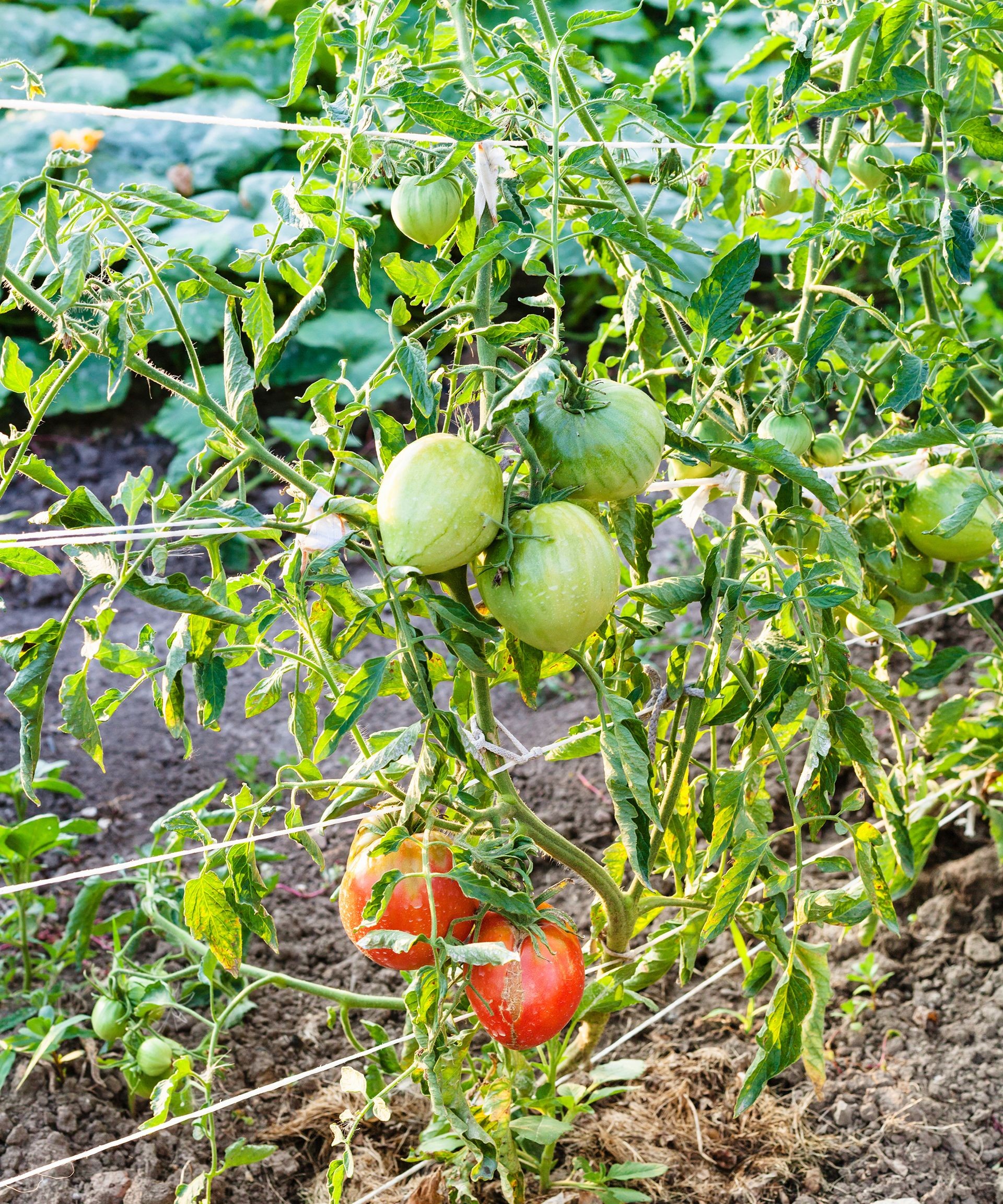 Tomato plants supported by the Florida weave trellising method
Tomato plants supported by the Florida weave trellising method
There are various methods for trellising vegetables, but a technique like the “weave” method offers an easy, cost-effective way to support your tomato plants and effectively boost crop yields. This approach typically involves using sturdy stakes driven into the ground at intervals along the row, with twine woven back and forth between the stakes, cradling the growing plants. As the plants increase in height, additional layers of twine are added, creating a supportive structure that can handle the weight of heavy fruit loads. This method also allows the vines a gentle curve, which many growers believe encourages more prolific fruit production. Furthermore, well-supported plants are easier to access for monitoring health, tending, and harvesting.
Unlocking Root Potential with Trench Planting
Trench planting is a somewhat unconventional but highly effective method that involves planting tomato seedlings horizontally rather than in the traditional upright position. While it might seem counterintuitive at first, this technique can dramatically enhance yields by fostering the development of stronger, more extensive root systems and, consequently, healthier overall plants.
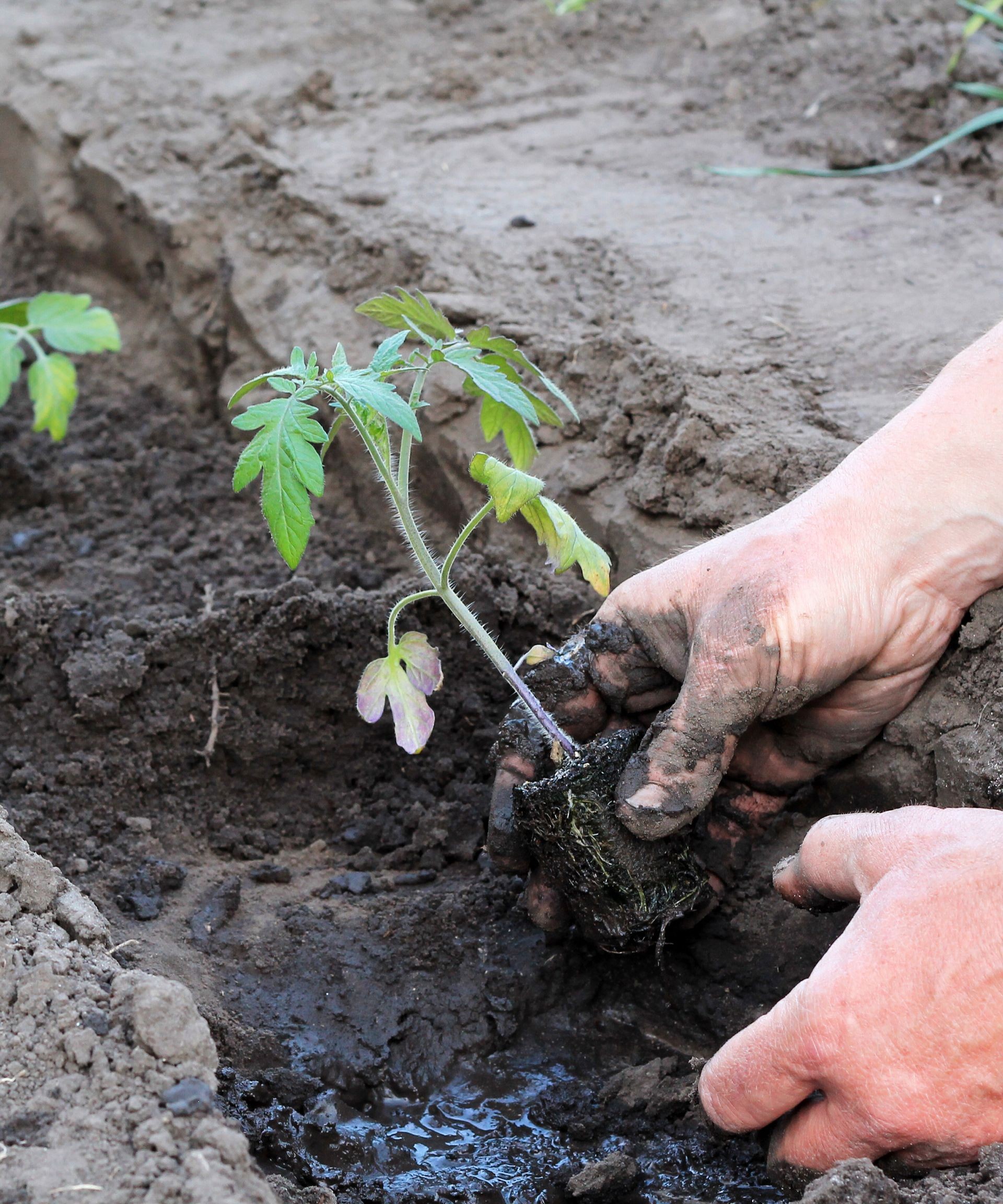 Gardener demonstrating trench planting technique for tomato seedlings
Gardener demonstrating trench planting technique for tomato seedlings
By laying the seedling on its side and burying a significant portion of the stem, you encourage the stem to sprout roots along its entire buried length. This results in a vastly more expansive and robust root network compared to a plant with roots originating only from the base. A larger root system is far more efficient at absorbing essential nutrients and water from the soil, fueling vigorous growth and fruit production. Additionally, these extensive roots provide superior anchorage, making the plant more stable and less susceptible to damage from strong winds or the sheer weight of ripening fruit. This method not only supports higher yields but can also extend the plant’s productive life, leading to a greater overall fruit harvest per plant. To implement this technique, choose healthy seedlings, remove the lower leaves, dig a shallow trench, lay the seedling horizontally with the top leaves exposed, and cover the buried stem with soil before watering thoroughly. Placing stakes at planting time minimizes root disturbance later.
Mastering Pollination for Optimal Fruit Set
Tomatoes are classified as self-pollinating plants, meaning each flower typically contains both male and female reproductive parts. They rely on external factors like wind movement and the activity of pollinating insects, such as bees, to transfer pollen within the flower or between flowers. However, in conditions where natural air movement is limited, or pollinator populations are low (such as in greenhouses or during periods of unfavorable weather), manually assisting pollination becomes a crucial strategy for increasing crop yields.
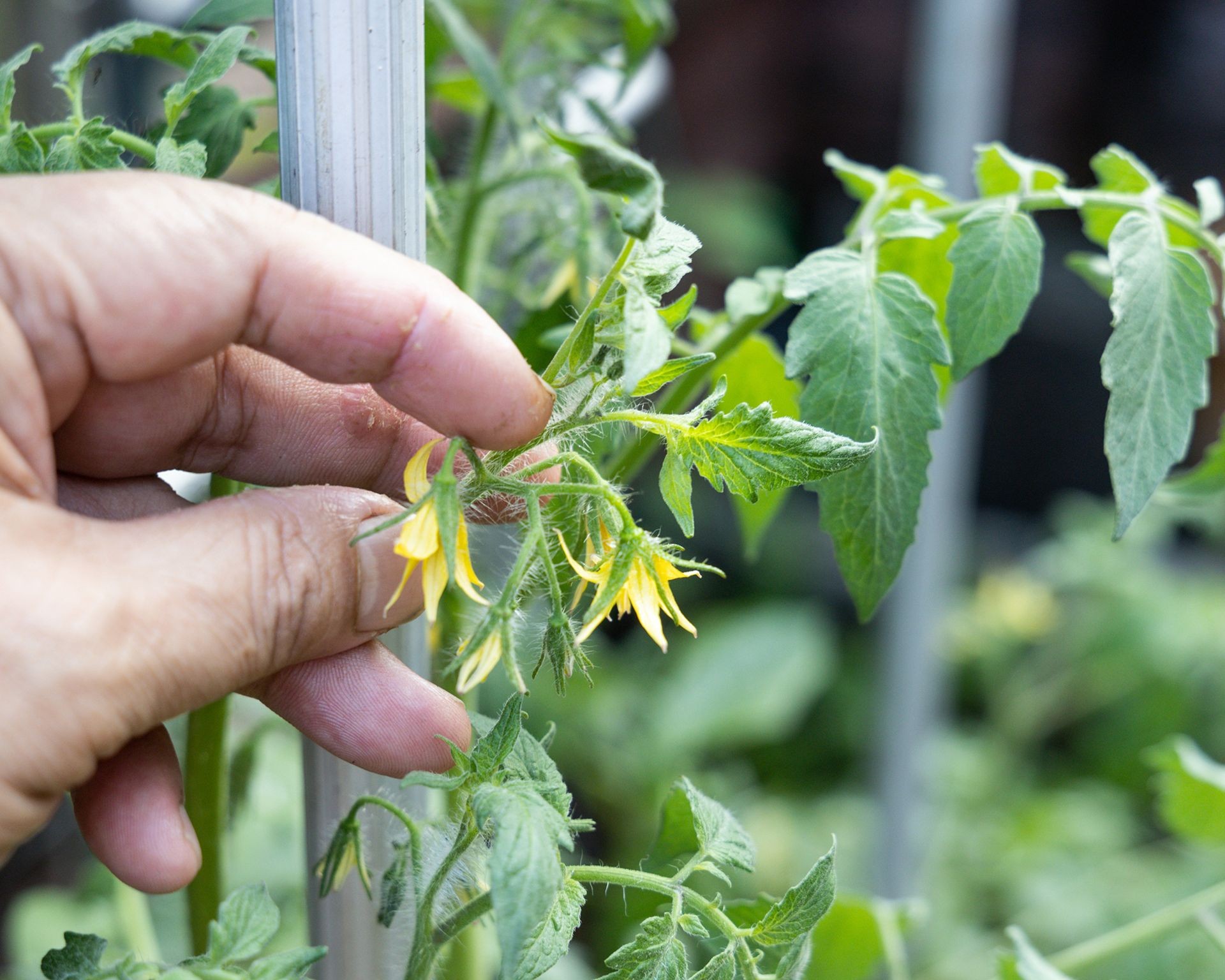 Gently tapping a tomato plant stem to aid in flower pollination
Gently tapping a tomato plant stem to aid in flower pollination
Simple methods for hand-pollinating include gently shaking the plant’s main stem to dislodge pollen, or using a soft brush or cotton swab to delicately transfer pollen from the anthers (male parts) to the stigma (female part) of each flower. One quick and reliable method is gently tapping the plant. Begin tapping as soon as flowers appear, performing this once or twice daily. Lightly tap the main stem, starting from the base and moving upwards. The optimal time for this activity is generally midday, particularly on warm, dry, sunny days when pollen is most viable. Dedicating just a few minutes each day to assist pollination can dramatically improve the number of flowers that successfully develop into fruit, leading to a more abundant and healthier harvest.
Strategic Pruning to Redirect Plant Energy
Judicious pruning and the removal of “suckers” (the side shoots that emerge in the crotch between the main stem and a leaf branch) are vital techniques for significantly increasing tomato yields. The primary goal of pruning is to redirect the plant’s energy away from producing excessive foliage and towards developing more and larger fruits. By carefully removing unnecessary leaves and unproductive growth, more sunlight can penetrate the plant canopy, reaching the remaining leaves and developing fruits. This improved light exposure enhances photosynthesis, fueling healthier growth and enabling the plant to allocate more energy to existing fruits, resulting in larger tomatoes and a more prolific overall yield.
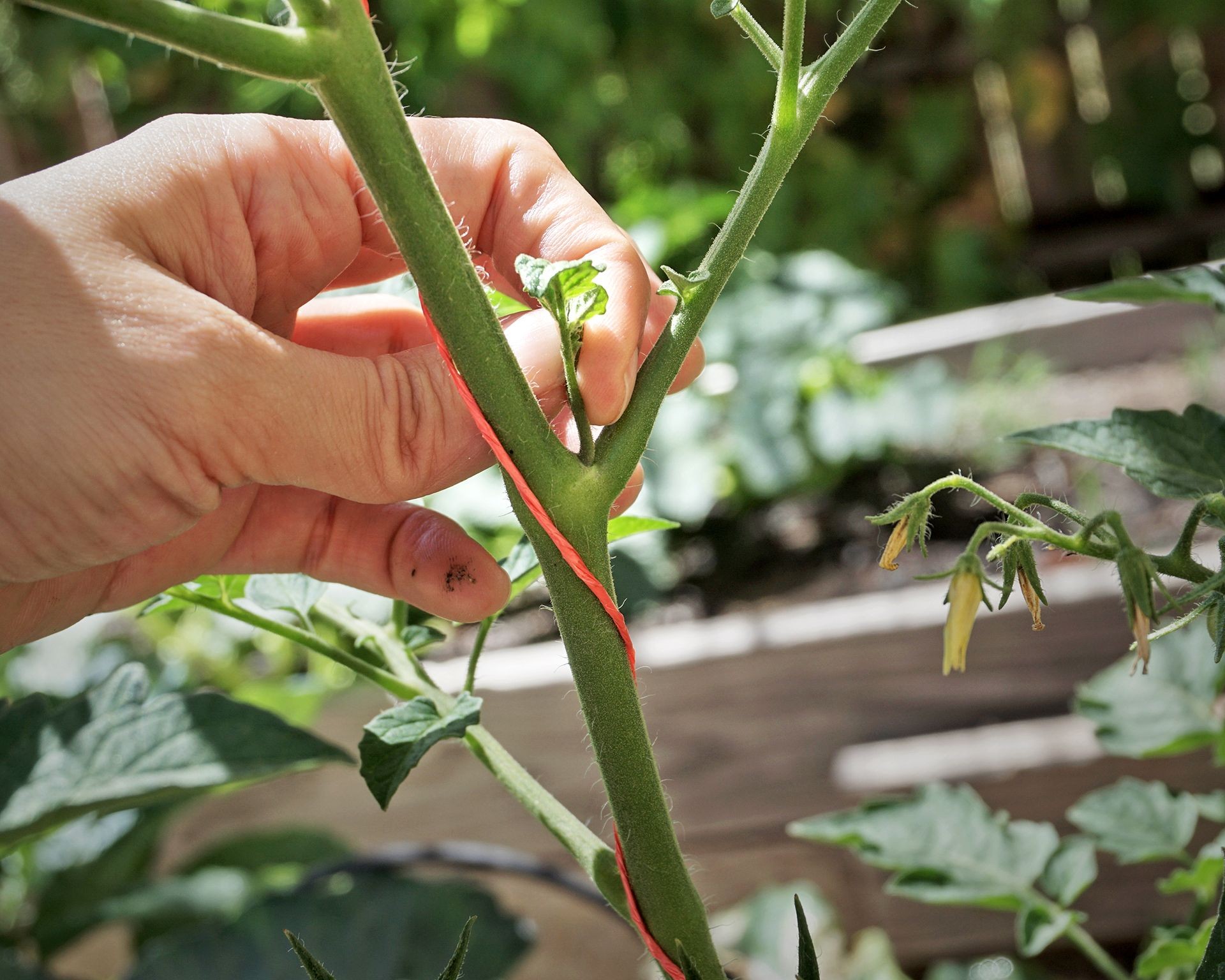 Proper technique for pinching out suckers on tomato plants
Proper technique for pinching out suckers on tomato plants
Beyond boosting yield, pruning also helps fruits ripen more uniformly and, importantly, improves air circulation within the plant structure. Better airflow is critical for reducing humidity and minimizing the risk of common fungal diseases like blight. As your plants grow, routinely remove the lower leaves, especially those close to the soil surface, to prevent soil-borne pathogens from splashing onto them during watering. Regularly pinch or snap off suckers when they are still small, ideally around 2-4 inches (5-10 cm) long, using your fingers or clean pruners. Towards the end of the growing season, you might consider “topping” indeterminate plants by removing the main growing tip; this signals the plant to stop producing new growth and focus its remaining energy on ripening the fruit already on the vine. Indeterminate varieties benefit most from consistent pruning due to their continuous growth habit, while determinate types require minimal pruning focused mainly on base leaves and suckers below the first flower cluster to maintain structural integrity.
Harnessing the Power of Companion Planting
Incorporating companion planting is one of the most beneficial practices you can adopt to enhance the growth and improve the yields of your tomato plants. This technique involves strategically positioning tomatoes to grow in close proximity to other plant species that offer mutually beneficial properties. These advantages can range from repelling common pests that target tomatoes to attracting beneficial insects and pollinators.
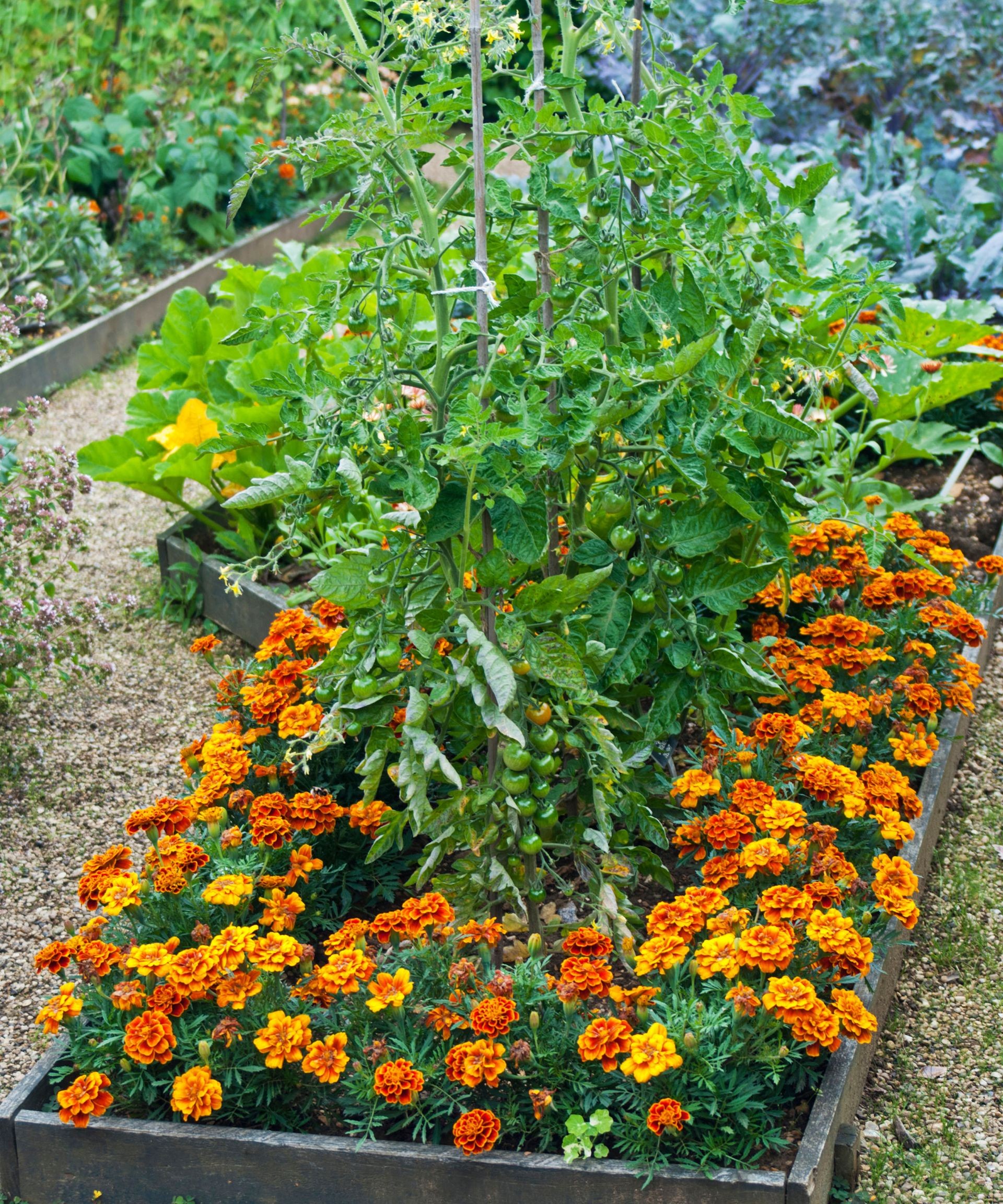 Example of companion planting tomatoes with marigolds in a garden bed
Example of companion planting tomatoes with marigolds in a garden bed
Companion plants can also contribute positively to soil health, either by adding specific nutrients or improving soil structure. Some companions are even believed by some gardeners to enhance the flavor of the tomatoes themselves or help the soil retain crucial moisture. Valuable companion plants often recommended for tomatoes include basil (thought to repel flies and hornworms, possibly improve flavor), marigolds (known to deter nematodes and other pests), carrots (loose soil helps tomato roots), and herbs like mint or parsley (attracting beneficial insects). Just as there are good neighbors in the garden, there are also plants that can negatively impact tomatoes by competing for nutrients, attracting pests, or inhibiting growth, so research is key when selecting companions.
Providing Essential Nutrients Through Proper Fertilization
Tomatoes are often described as “heavy feeders,” meaning they require a consistent supply of nutrients from the soil throughout their growth cycle to support vigorous vegetative growth and produce a heavy crop of fruit. Regular fertilization with a balanced nutrient profile is therefore indispensable for maximizing yield.
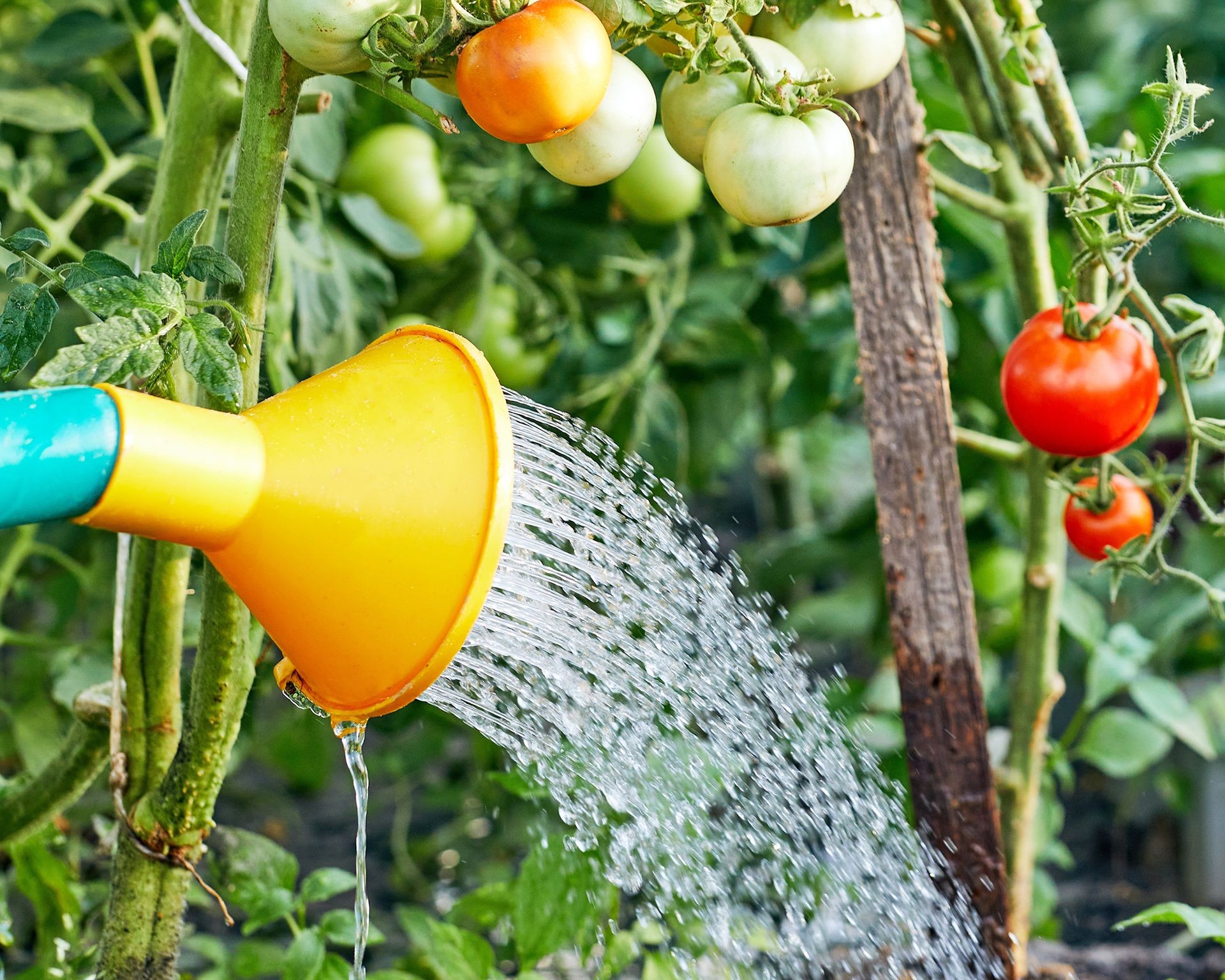 Watering tomato plants to ensure proper hydration and nutrient uptake
Watering tomato plants to ensure proper hydration and nutrient uptake
The primary macronutrients needed by all plants are nitrogen (N), which promotes lush green leafy growth; phosphorus (P), vital for strong root development and flowering; and potassium (K), essential for overall plant health, fruit development, and disease resistance. However, tomatoes also benefit significantly from secondary nutrients and micronutrients, including calcium (Ca) for preventing issues like blossom-end rot, magnesium (Mg) and iron (Fe) for chlorophyll production (vital for photosynthesis), and other trace elements necessary for enzymatic processes. It’s important to note that balance is key; providing too much of any single nutrient can be detrimental. For instance, excessive nitrogen can lead to abundant foliage at the expense of fruit production, while phosphorus excess can stunt growth. Early in the planting season, fertilizers with a slightly higher nitrogen ratio support initial vegetative growth. As plants begin to flower and set fruit, switching to fertilizers with higher phosphorus and potassium content encourages flowering and fruit development. A typical fertilization schedule involves feeding at the time of planting and then every few weeks throughout the growing season until harvesting concludes. Watering is also critical, as nutrients must be dissolved in water to be absorbed by the roots.
Applying these expert strategies—from choosing the right varieties and providing robust support to optimizing pollination, pruning wisely, leveraging companion plants, and fertilizing appropriately—can transform your tomato patch. By focusing on these key areas, you empower your plants to overcome challenges and invest their energy into producing the largest, most flavorful, and most abundant harvest possible. Start implementing these techniques today. We encourage you to explore the range of high-quality gardening products available from Biogarden.asia designed to support every step of your tomato growing journey, from soil amendments to fertilizers. Try these methods with Biogarden products and share your success stories!



